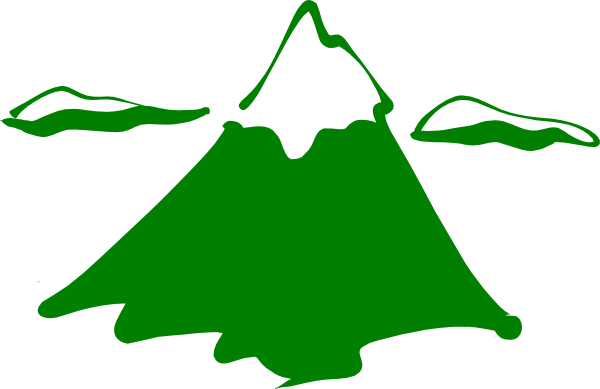Region: Naggar/Manali
 Total Duration – 3 Nights / 4 Days
Total Duration – 3 Nights / 4 Days
 Maximum Altitude – 3300m/10820ft
Maximum Altitude – 3300m/10820ft
 Grade – Easy to Moderate
Grade – Easy to Moderate
 Best Season – December to April
Best Season – December to April
![]() Accommodation – Hotel/Guesthouse in Naggar ; Organized Campsite
Accommodation – Hotel/Guesthouse in Naggar ; Organized Campsite
 Food – On trek – All meals included
Food – On trek – All meals included
 Distance – 25 KM.
Distance – 25 KM.
Details
The Chanderkhani Pass located in the middle of lush green Kullu valley is the most famous trek of Himachal Pradesh. The Chanderkhani Pass trek is done in any season. But the trek done in winter has a different charm and experience. In winter the trek offers great views of snow laden forests, mountains, meadows, peaks like Inderasan, Deo Tibba, Hanuman Tibba and some prominent ranges such as Bara Banghal Range, Pir Panjal Range, Priyadarshini range. This trek can be done by anyone, even those who have been less to the mountains.
The trek starts from Naggar, located on the left bank of a river Beas, at 1800m., an ancient town and former capital of Kullu (till 1460 AD). Rich culture, traditional houses, great temples and beautiful locations are the specialty of Naggar. One can enjoy visiting Art gallery, Naggar Castle and many other places in the surrounding. Situated in the middle of the Kullu Manali valley Naggar is approachable even in the heavy snowfalls. In winter the snowfall turns the valley into heaven.
The trail for Chanderkhani Pass actually starts from the Rumsu village. Rumsu is an ancient tribal village just few km’s above Naggar. The trail to the pass passes through in the middle of the village. The temples in the village have beautiful intricate carvings. Houses made with wood and stone are interesting to see the rural architecture. The huge Deodar trees can be seen in the middle of Rumsu village. These trees sited in the surrounding of the temple, are meant to be sacred and holy trees as in the whole valley. These trees are so huge that it takes a bunch of people to circle it around. Going further from Rumsu the trail brings us to the initial uphill through the forest. The trail till the campsite is full with dense forests of Deodar, pine and oak trees. One can encounter huge trees en route too. While climbing up we reach at the place called Stelling, a pastoral meadow which normally is covered with snow in winter. Have lunch and spend some time at Stelling cause further on the snowy trail will start. The conditions and the ratio of snowfall will decide the beginning of snow trail. It could start from the woods above Rumsu village or further up from Stelling or below. So snow will appear somehow on the trail sooner or later. Treading on the snow is not easy as beautiful it looks in a picture. Though walk slowly and steadily that you won’t slip or fall. Few ups and downs then we reach at Ghon Kradi. Our first day s camp at Ghon Kradi, is mainly a little meadow with huge trees all around and abandoned shepherds shelter. ‘Ghon-Kradi’ in the local dialect means ‘Hammer and the Axe’. It is one of the places from where locals used to collect wood for winter. A bonn fire is appropriate on such chilly temperature in the evening. So spend a beautiful night with lighting up the camp fire at Ghon Kradi. After Ghon Kradi an enchanting trail to Naya Tapru will continue. The route to Naya Tapru consists of great snow on the way up with trees and its branches almost immersed and wrapped with snow. Some smaller trees and a lot more vegetation is seen lost under the great snow. Walking on the deep snow could be a challenge, but with strong will and endurance one can easily pass these obstacles. As you go up the trail, the whole of the Beas valley opens up to you. You begin to see the Dhauladar Range beyond the Beas valley in all its snowcapped glory. The terrain leading uphill is slightly steep on just below the Naya Tapru (9,970ft). However the scenic beauty around would make one to forget fatigue and discomfort. At naya tapru you can have soothing views of most of the Himalayan ranges from a great distance. After spending quality time at Naya Tapru we head back towards the campsite at Ghon Kradi. One should reach the camp by the late afternoon. Stay another wonderful night at Ghon Kradi making Bonn fire on the snow.. Next day climb down to roadhead following the same route till Rumsu. From Rumsu ride back to Naggar by local conveyance.
Departure tariff 5,500/- excluding GST of 5%
Detailed itinerary
Day 1. Report Naggar at Hotel Journey Casa (1800m.)
Reporting – Acclimatization – Orientation & Briefing of the trek – Trek Preparation & window shopping.
(Sufficient time would be given for visiting market and nearby places)
Arrive nagger by any local conveyance. Spend a night in the camps/ hotel at Naggar. Naggar is an ancient village with lots of temples and places to visit. One can spend some quality time at these places.
Day 2. Naggar – Rumsu - Ghon Kradi (6-7 km.) (4-5 hrs.)
The trek will start from Naggar by taking a cab till Rumsu. The actual trail starts from Rumsu which is 5km. far from the town of Naggar. The trail has concrete stairs at initial, but disappears with muddy terrain after few minutes.The route is moderately difficult. There are few very steep patches; otherwise the trail is not bad. The trail goes through the village to the mighty forest of different species. The trail takes one to the fabulous landscapes and huge forests of Naggar. One the way one will find huge trees of chestnut Deodar and oak, showing their prominence in the area. The trail might have the snowy patches on the lower heights but as you go higher the snow will appear all around. Further on, the trail will eventually lead to an open pastoral meadow which will be covered with snow at Stelling. One can have his lunch and rest at this beautiful meadow. After having lunch the trail is moderate but walking on the snow could be a challenge on the few uphills. The distance from Stelling to Ghon Kradi is not that far and one can leisurely approach the campsite. The snow laden trees of Deodar, creates a mesmerizing sight of one being in the heaven. As going up brings one to the open meadows all covered with snow at Ghon Kradi. The campsite is surrounded with chestnut, oak and pine trees. It is a grazing pasture normally used by the shepherds in the summer season. People also collect wood from this place for the winters. Evening at Ghon Kradi is as beautiful as it goes till night falls. The twilight painting the sky orange, the stars shining in the dark sky and the snow reflecting the light as one can see without torchlight, chilling nights are some of the moments one can only enjoy at this place in winter. Spend a beautiful night in your camps.
Day 3. Ghon Kradi – Naya Tapru 2900m/9000ft. – Ghon Kradi (3-4 km.) (3-4 hrs.)
On the next day we climb towards Naya Tapru. The trail is steep covered with deep snow. Walking on deep snow could be a difficulty but the experience is out of this world. The trail passes through birch, oak, wild chestnut and rhododendron trees. The trees and huge rocks are the only visible objects yet the other vegetation is covered with snow till the next summer. Since it is a hiking day one has sufficient time to reach Naya Tapru. Climbing higher the mountain better the vista gets. The way up is all surrounded by the dense forest till Shedu Pather. Suddenly after passing some huge rocks on the way the forest opens up to a vast meadow. The place with white rocks is called Shedu Pathar beyond it is open slope. It is the place where one would find himself lucky that his effort wasn’t in vain. Naya tapru is a bit higher from Shedu pather, but on the same meadow. Therefore all the mighty ranges of dhauladhar, Hanuman tibba, priyadarshini range are clearly visible at Naya Tapru. One can’t stop himself by taking pics, doing slides and playing with snow. Naya Tapru is also a pastoral field, which is packed with sheeps and shepherds in the summers. After having an enjoyable day at Naya Tapru we climb down the same route to Ghon Kradi. On the way back one can do the sliding to avoid slipping or sinking on the snowy slopes. One can use a stick to support while walking downwards. Although walking on the snow even if you fall or slip it won’t hurt you, coz snow is soft and is all around. Descending down to the campsite is as amazing as one would have thought of real natural adventure. The encounter to the nature is so close and realistic that one would never forget this trek. We reach back at campsite by the evening. Have a hot cup of tea and relax in your camps.
Day 4. Ghon Kradi – Rumsu – Naggar (6-7 km.) (4-5 hrs.)
Following day we climb down to the road head at Rumsu. After having breakfast we start back to the village via same route. Walking on the snow isn’t that tough than on the slippery mud. Because as we climb down the snow it will slowly disappear and these wet patches will appear. Because the lower part of the mountain trail is on the clay, which once gets wet it becomes so slippery. And it’s obvious that snow melting upwards brings water down to these mud slopes. Walking uphill creates no disturbance on these patches but one should be careful treading down on the slopes. We take some rest at Stelling and proceed downwards. Then passing through the forest we reach at the final part of the trek that consists of clay surface. It is just above the Rumsu village but the slipperiness it causes it takes some time to overcome this patch. After it the trail is fine as one would remember the previous trekking days. Finally we reach at roadhead where our vehicle would be waiting for us after a great trekking experience. Hop in and reach Naggar. From here you are set to go to your own destinations.
Things to Pack: Rucksack, cotton clothes, good trekking shoes, a warm jacket, Feather Jacket, fleece jacket,warmer, woolen or monkey cap covering head and ears, UV rays protected sunglasses, raincoat, extra socks, water bottle, torch, cold cream, sunscreen, toilet soap, towel, walking Stick and medicines that you usually use.
What is included in the tour
- Local transport during Trek.
- Highly Advanced and qualified Guide from Himalaya Destination.
- Skilled Local Guide who has ample knowledge of the route.
- Vegetarian meals on the trek (Breakfast/Lunch/Dinner)
- Cooks/Helper and other requisite staff.
- Porters/mules for carrying common equipments (like rations/tents/utensils)
- Equipment’s – Tents on sharing basis / Sleeping bags / Sleeping Mattress/ Sleeping bag Inner.
- While on trek all meals will be provided. Meals will be freshly prepared and will be a mix of Indian, Chinese & Continental.
- Basic First aid Kit with portal oxygen.
- Forest Permits and camping charges.
What is NOT included in the tour
- Personal Porters for carrying trekker’s backpacks
- Personal trekking equipments – like trekking poles or sleeping bag liners
- Personal insurance or cost of emergency evacuation
- Purchases of personal natures (like mineral water bottles/bottled or canned beverages/chocolates/dry fruits etc)
- Food to/from the trailhead.
- GST 5%.









